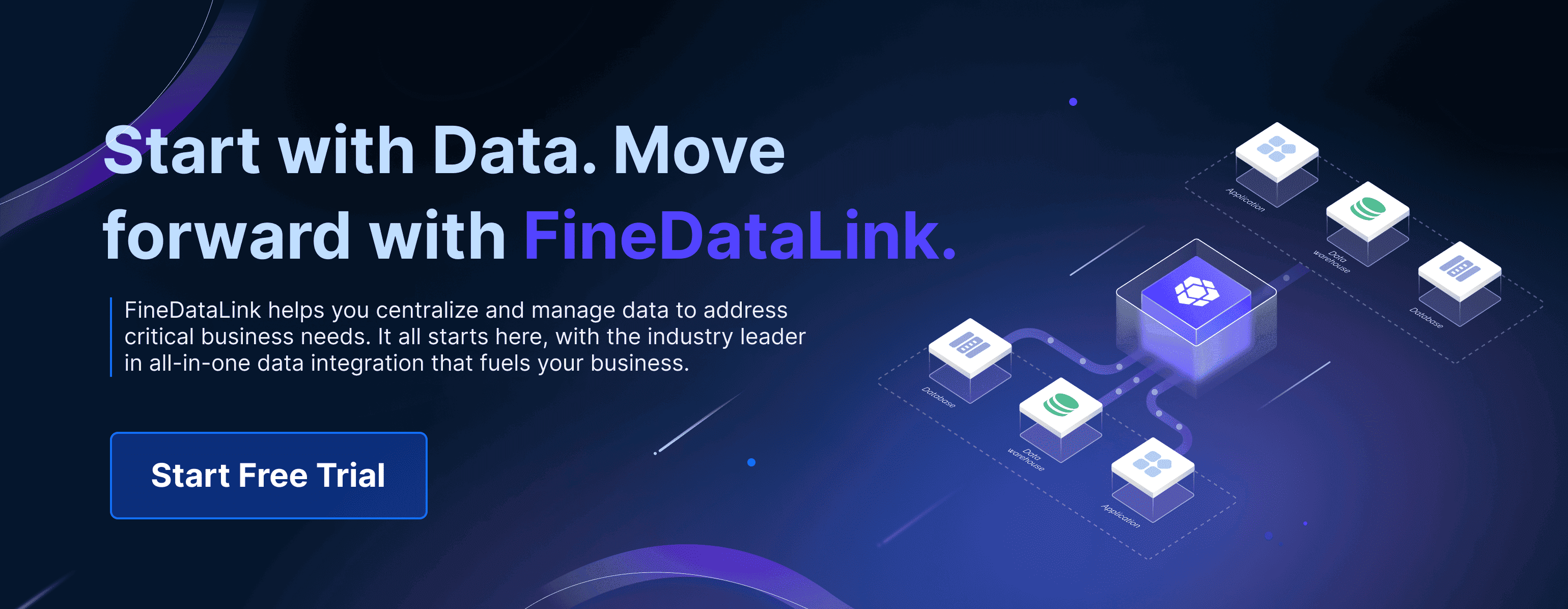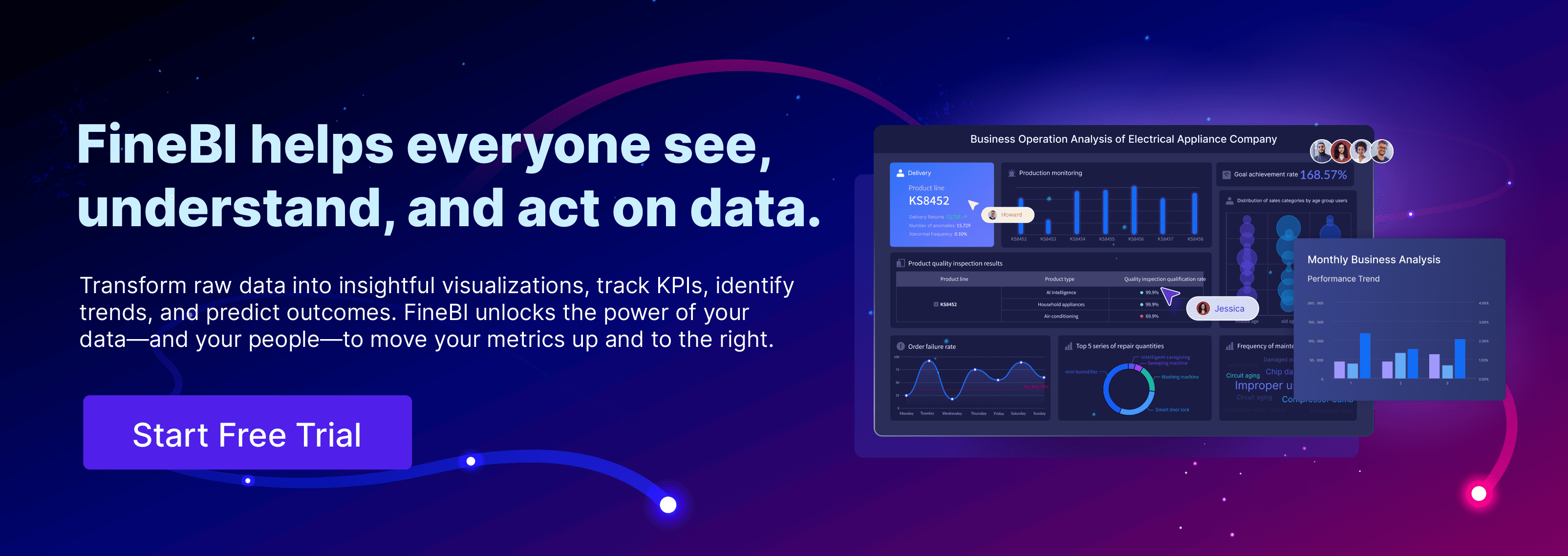

Data consolidation is the process of combining data from various sources into a single, unified view. This practice is crucial in today's data-driven world. It enhances decision-making by providing a complete and accurate view of your data. By consolidating data, you can improve productivity and efficiency, streamline operations, and reduce costs. Tools like FineDataLink and FineBI facilitate this process, offering seamless integration and real-time insights. Embracing data consolidation ensures that you harness the full potential of your data, empowering informed decisions and strategic growth.
Understanding Data Consolidation
Definition and Explanation of Data Consolidation
Data consolidation involves merging data from various sources into a single, unified view. This process ensures that you have a comprehensive understanding of your data landscape. By consolidating data, you eliminate inconsistencies and discrepancies, which enhances the accuracy of your data analysis.
Key Characteristics
Data consolidation is characterized by its ability to provide a holistic view of data. It integrates data from different systems, ensuring consistency and reliability. This process often involves cleaning and transforming data to make it uniform. You can then access this consolidated data from a single point, which simplifies data management and analysis.
Differences from Data Integration and Aggregation
While data consolidation combines data into a single repository, data integration focuses on connecting different data sources to work together. Data aggregation, on the other hand, involves summarizing data for analysis. Consolidation provides a unified view, whereas integration and aggregation serve different purposes in data management.
Historical Context of Data Consolidation
Evolution of Data Management
The evolution of data management has seen significant changes over the years. By the year 2000, businesses faced challenges with poorly integrated systems and inconsistent data. This led to the development of data warehouses, which played a crucial role in consolidating data. These warehouses allowed organizations to store and manage large volumes of data efficiently.
Role of Data Consolidation in Business
Data consolidation has become essential for organizations aiming to streamline their data processes. It helps improve decision-making by providing a complete and accurate view of data. In 2011, Microsoft launched a database consolidation device to manage the continuously growing data. This innovation highlighted the importance of data consolidation in handling large datasets. By consolidating data, businesses gain a competitive edge, as they can manage their data more effectively and make informed decisions.
Importance of Data Consolidation
Enhancing Decision-Making
Data consolidation plays a pivotal role in enhancing your decision-making process. By merging data from various sources into a single, unified view, you gain a comprehensive understanding of your data landscape. This unified view is crucial for making informed decisions that drive business success.
Providing a Unified Data View
When you consolidate data, you create a unified view that eliminates data inconsistencies and data discrepancies. This holistic perspective allows you to see the bigger picture, making it easier to identify trends and patterns. With all relevant data at your fingertips, you can make decisions based on accurate and complete information.
Improving Data Accuracy
Data consolidation improves data accuracy by ensuring that all data is consistent and reliable. By integrating data from different systems, you eliminate errors and redundancies. This accuracy is essential for making sound decisions that are based on trustworthy data. Accurate data leads to better insights, which in turn enhances your decision-making capabilities.
Operational Efficiency
Operational efficiency is another significant benefit of data consolidation. By streamlining data processes and reducing redundancies, you can optimize your operations and improve productivity.
Streamlining Data Processes
Data consolidation streamlines your data processes by eliminating the need to manually collect and manage data from multiple sources. This automation saves you time and effort, allowing you to focus on more strategic tasks. With streamlined processes, you can manage your data more efficiently and effectively.
Reducing Redundancies
By consolidating data, you reduce redundancies and optimize your data management processes. This reduction in redundancy not only saves storage space but also enhances data quality. With fewer duplicates and inconsistencies, you can ensure that your data is accurate and reliable. This reliability is crucial for making informed decisions and improving operational efficiency.
Techniques for Data Consolidation

Data Warehousing
Data warehousing serves as a cornerstone in data consolidation. It involves storing and managing large volumes of data in a centralized repository. This technique allows you to analyze data efficiently and make informed decisions.
Centralized Data Storage
Centralized data storage is a key feature of data warehousing. By consolidating data from various sources into a single location, you gain a comprehensive view of your data landscape. This approach eliminates data silos and ensures that all relevant information is accessible from one point. You can then perform complex queries and analyses without the need to access multiple systems.
Benefits and Limitations
Data warehousing offers several benefits:
- Improved Data Quality: By consolidating data, you ensure consistency and accuracy across your datasets.
- Enhanced Decision-Making: Access to a unified data view allows for better analysis and insights.
- Scalability: Data warehouses can handle large volumes of data, making them suitable for growing businesses.
However, there are limitations to consider:
- Cost: Implementing and maintaining a data warehouse can be expensive.
- Complexity: Setting up a data warehouse requires technical expertise and resources.
ETL processes play a crucial role in data consolidation. They involve extracting data from various sources, transforming it into a desired format, and loading it into a target database or data warehouse.
Steps Involved
The ETL process consists of three main steps:
- Extract: You gather data from different sources, such as databases, applications, and files.
- Transform: You convert the extracted data into a consistent format, ensuring it meets your business requirements.
- Load: You load the transformed data into a target system, such as a data warehouse, for analysis and reporting.
This process ensures that your data is accurate, consistent, and ready for use.
Tools and Technologies
Several tools and technologies facilitate ETL processes:
- Airbyte, Fivetran, and StitchData: These tools help automate the extraction, transformation, and loading of data, enhancing efficiency.
- Matillion and Talend Data Integration: These platforms offer advanced features for data transformation and integration.
- Astera: This AI-powered solution provides user-friendly options for data consolidation, including ETL, data virtualization, and data warehousing.
By leveraging these tools, you can streamline your data consolidation efforts and ensure high-quality data management.
Data Consolidation vs. Data Integration
Key Differences
Understanding the differences between data consolidation and data integration is crucial for effective data management.
Purpose and Scope
Data Consolidation focuses on centralizing data into a single repository. This process involves merging data from various sources to create a unified view. By consolidating data, you aim to eliminate redundancies and inconsistencies, providing a single source of truth for analysis and decision-making.
Data Integration, on the other hand, involves combining and linking data from different sources without necessarily centralizing them. The goal is to connect and synchronize data across multiple systems, allowing for seamless data flow and interoperability. Integration maintains the original data structures, offering flexibility and preserving the integrity of each source's format.
Use Cases
Data consolidation is ideal when you need a comprehensive view of your data landscape. It suits scenarios where you want to eliminate data silos and ensure consistency across datasets. For example, businesses often use consolidation to create data warehouses that support strategic decision-making.
Data integration is more suitable when you need to connect diverse datasets for real-time analysis. It is often used in environments where data from different systems must work together without being centralized. Integration supports applications like customer relationship management (CRM) systems, where data from various departments needs to be synchronized.
When to Use Each Approach
Choosing between data consolidation and data integration depends on your specific business needs and objectives.
Business Scenarios
You should consider data consolidation when your organization requires a single, unified view of data for strategic analysis. This approach is beneficial for companies looking to streamline operations and improve decision-making by having all relevant data in one place.
Data integration is preferable when your business needs to maintain the flexibility of accessing and using data from multiple sources. It is ideal for scenarios where real-time data updates and interoperability between systems are critical.
Decision Criteria
To decide which approach to use, evaluate your organization's data management goals:
- Consolidation: Opt for this if you need to reduce data redundancy, improve data quality, and create a centralized data repository.
- Integration: Choose this if you require seamless data flow across systems, need to maintain original data structures, and prioritize real-time data access.
By understanding these differences and evaluating your business scenarios, you can make informed decisions about whether to consolidate or integrate your data.
Challenges in Data Consolidation
Data consolidation offers numerous benefits, but it also presents challenges that you must address to ensure success. Understanding these challenges can help you implement effective strategies for overcoming them.
Data Quality Issues
Ensuring high-quality data is a significant challenge in data consolidation. You need to address inconsistencies and inaccuracies to maintain data integrity.
Inconsistent Data Formats
Data from different sources often come in various formats. This inconsistency can lead to errors during consolidation. You must standardize these formats to ensure seamless integration. Implementing data profiling and cleansing processes can help you identify and rectify these inconsistencies. By transforming diverse datasets into a consistent format, you enhance data quality and reliability.
Data Duplication
Data duplication is another common issue. Duplicate records can skew analysis and lead to incorrect conclusions. You need to identify and eliminate these duplicates to maintain data accuracy. Rigorous data cleansing and validation processes are essential for ensuring that your consolidated data is free from redundancies. This approach not only improves data quality but also enhances the reliability of your information systems.
Technical and Resource Constraints
Technical and resource constraints can hinder your data consolidation efforts. Addressing these challenges requires careful planning and resource allocation.
Infrastructure Requirements
Data consolidation often demands robust infrastructure. You need systems capable of handling large volumes of data efficiently. Investing in the right technology is crucial for supporting your consolidation processes. Consider scalable solutions that can grow with your organization's needs. This investment ensures that your infrastructure can accommodate increasing data volumes without compromising performance.
Cost Considerations
Cost is a significant factor in data consolidation. Implementing and maintaining the necessary infrastructure can be expensive. You must evaluate the costs involved and weigh them against the benefits of consolidation. While the initial investment may be high, the long-term benefits of improved data quality and operational efficiency can outweigh these costs. By carefully assessing your budget and prioritizing essential components, you can manage costs effectively while achieving successful data consolidation.
Best Practices for Effective Data Consolidation
Planning and Strategy
To achieve successful data consolidation, you must begin with a solid plan and strategy. This foundation ensures that your efforts align with your organization's goals and objectives.
Setting Clear Objectives
Start by setting clear objectives for your data consolidation project. Define what you aim to achieve, whether it's improving data accuracy, enhancing decision-making, or streamlining operations. Clear objectives guide your efforts and help you measure success. They also provide a roadmap for your team, ensuring everyone works towards the same goals.
Involving Stakeholders
Involving stakeholders is crucial for the success of your data consolidation efforts. Engage key individuals from different departments to gather insights and address concerns. Stakeholders can provide valuable input on data sources, formats, and requirements. Their involvement fosters collaboration and ensures that the consolidated data meets the needs of the entire organization.
Once you have a plan in place, focus on implementation and monitoring. These steps ensure that your data consolidation efforts remain effective and efficient.
Once you have a plan in place, focus on implementation and monitoring. These steps ensure that your data consolidation efforts remain effective and efficient.
Regular Data Audits
Conduct regular data audits to maintain the quality and accuracy of your consolidated data. Audits help identify inconsistencies, errors, and redundancies. By addressing these issues promptly, you ensure that your data remains reliable and trustworthy. Regular audits also provide an opportunity to assess the effectiveness of your data consolidation processes and make necessary adjustments.
Continuous Improvement
Data consolidation is not a one-time task. It requires continuous improvement to adapt to changing business needs and technological advancements. Regularly review your processes and tools to identify areas for enhancement. Implement new technologies and methodologies to streamline operations and improve efficiency. By embracing continuous improvement, you ensure that your data consolidation efforts remain relevant and effective in the long term.
Future Trends in Data Consolidation

Emerging Technologies
The landscape of data consolidation is rapidly evolving, driven by emerging technologies that promise to revolutionize how you manage and utilize data.
AI and Machine Learning
Artificial Intelligence (AI) and Machine Learning (ML) are at the forefront of this transformation. These technologies enable you to automate data consolidation processes, reducing manual intervention and increasing efficiency. AI algorithms can identify patterns and anomalies in data, ensuring higher accuracy and reliability. By leveraging AI and ML, you can streamline data management and gain deeper insights, ultimately enhancing decision-making capabilities.
Cloud-Based Solutions
Cloud computing has become a cornerstone of modern data consolidation strategies. With cloud-based solutions, you can store and access data from anywhere, eliminating the need for physical infrastructure. This flexibility allows you to scale your data operations as needed, accommodating the ever-growing volume of data. Cloud platforms also offer robust security features, ensuring that your data remains protected. By adopting cloud-based solutions, you can enhance data accessibility and streamline consolidation efforts.
Impact on Business Intelligence
The integration of emerging technologies into data consolidation processes significantly impacts business intelligence, providing you with advanced tools to harness the power of your data.
Enhanced Analytics Capabilities
With consolidated data, you can unlock enhanced analytics capabilities. The unified view of data allows you to perform comprehensive analyses, uncovering trends and patterns that were previously hidden. Advanced analytics tools, powered by AI and ML, enable you to generate predictive insights, helping you anticipate future trends and make proactive decisions. By leveraging these capabilities, you can drive strategic growth and maintain a competitive edge.
Real-Time Data Access
Real-time data access is becoming increasingly crucial in today's fast-paced business environment. Consolidated data, combined with cloud-based solutions, allows you to access up-to-date information instantly. This real-time access empowers you to make informed decisions quickly, responding to market changes and customer needs with agility. By embracing real-time data access, you can enhance operational efficiency and improve overall business performance.
FanRuan's Role in Data Consolidation
In the realm of data consolidation, FanRuan stands out with its innovative solutions. FineDataLink and FineBI play pivotal roles in transforming how you manage and utilize data. These tools empower you to streamline data processes, ensuring efficiency and accuracy.
FineDataLink's Contribution
FineDataLink excels in providing robust data integration capabilities. It has successfully delivered over 1,000 data projects, showcasing its reliability and effectiveness.
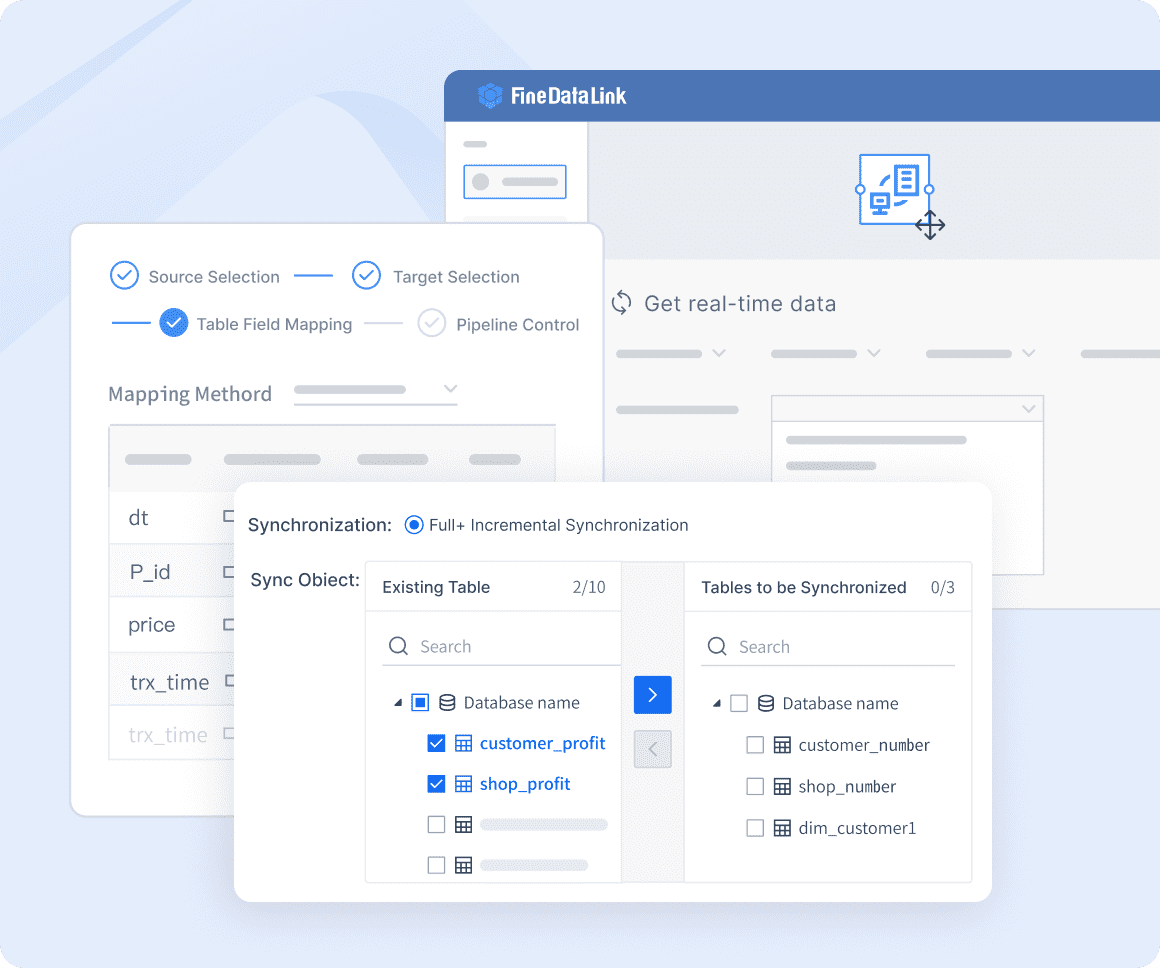
Real-Time Data Synchronization
With FineDataLink, you achieve real-time data synchronization. This feature ensures that your data remains up-to-date across all platforms. You can access the latest information instantly, which is crucial for making timely decisions. Real-time synchronization eliminates delays, allowing you to respond swiftly to market changes and customer needs.

Advanced ETL & ELT Processes
FineDataLink offers advanced ETL (Extract, Transform, Load) and ELT (Extract, Load, Transform) processes. These processes simplify data consolidation by automating data extraction, transformation, and loading. You can efficiently manage large volumes of data, ensuring consistency and accuracy. The platform's low-code approach makes it accessible, even if you lack extensive technical expertise.
Benefits of Using FineDataLink
Choosing FineDataLink brings numerous advantages to your data consolidation efforts. Its user-friendly design and comprehensive integration capabilities set it apart.
User-Friendly Interface
The interface of FineDataLink is intuitive and easy to navigate. You can perform complex data tasks with simple drag-and-drop operations. This ease of use reduces the learning curve, enabling you to focus on strategic data management rather than technical challenges.
FineDataLink supports integration with over 100 common data sources. This extensive connectivity allows you to consolidate data from various systems seamlessly. You can create a unified data view, eliminating silos and enhancing data accessibility. By leveraging FineDataLink, you ensure that your Comprehensive Data Integration processes are efficient and effective.
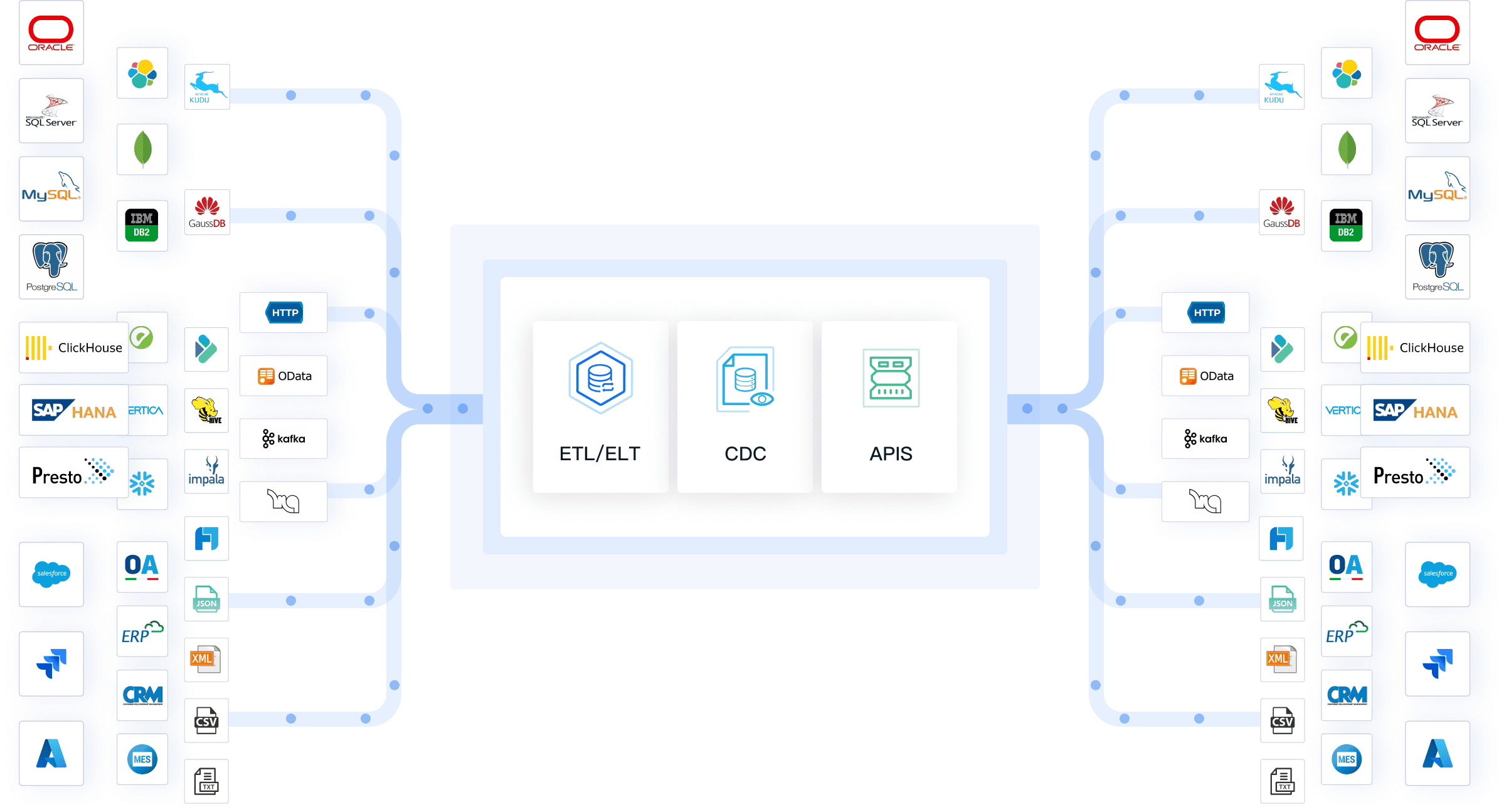
FineDataLink supports integration with over 100 common data sources. This extensive connectivity allows you to consolidate data from various systems seamlessly. You can create a unified data view, eliminating silos and enhancing data accessibility. By leveraging FineDataLink, you ensure that your data consolidation processes are efficient and effective.
FineBI complements FineDataLink by offering powerful analytics capabilities. Together, they provide a comprehensive solution for data consolidation and analysis. You can transform raw data into actionable insights, driving informed decision-making and strategic growth.
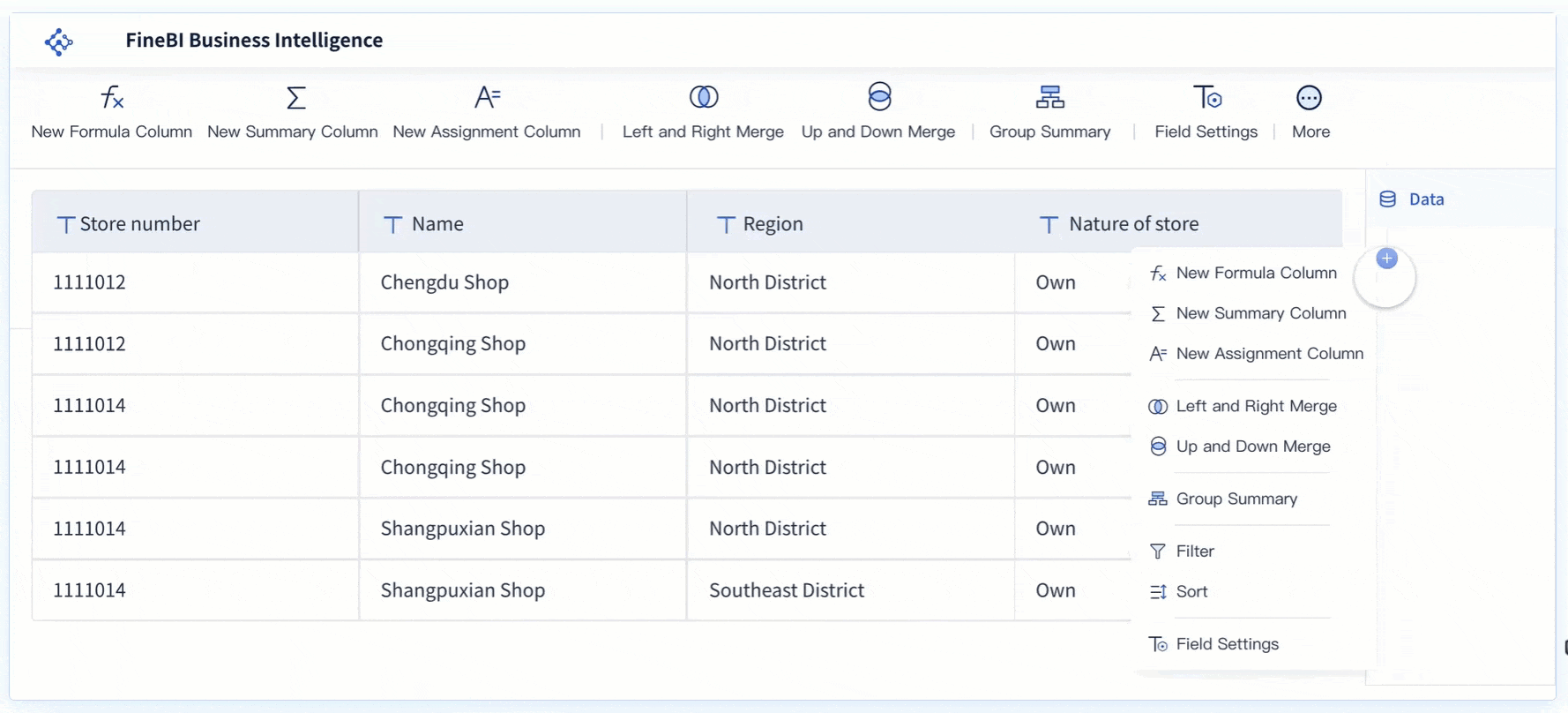
Conclusion of Data Consolidation
Data consolidation is essential for modern businesses. It provides a unified view of data, improving accuracy and efficiency. By consolidating data, you can make informed decisions and gain valuable insights. This process enhances data governance and security, ensuring high-quality data for analysis. Embrace best practices like regular audits and stakeholder involvement to maximize benefits. By adopting data consolidation, you streamline operations and unlock the full potential of your data, driving strategic growth and competitive advantage.
FAQ
Data consolidation involves combining data from various sources into a single, unified view. This process helps you manage and analyze your data more effectively by eliminating silos and providing a comprehensive overview.
Consolidating data ensures you have complete and accurate datasets. It enhances decision-making by providing a clear picture of your operations. Additionally, it reduces costs and improves data quality, making your business more efficient.
Data consolidation centralizes data into one repository, creating a unified view. In contrast, data integration connects different data sources, allowing them to work together without necessarily centralizing them. Each serves distinct purposes in data management.
ETL (Extract, Transform, Load) tools streamline the data consolidation process. They help you merge large volumes of data swiftly and efficiently, ensuring consistency and accuracy. These tools automate data extraction, transformation, and loading, saving you time and effort.
Common challenges include inconsistent data formats and data duplication. You may also encounter technical constraints, such as infrastructure requirements and cost considerations. Addressing these issues requires careful planning and resource allocation.
Implement data profiling and cleansing processes to standardize formats and eliminate duplicates. Regular data audits help maintain accuracy and reliability. By addressing inconsistencies promptly, you ensure your data remains trustworthy.
Emerging technologies like AI and machine learning automate data consolidation processes, increasing efficiency. Cloud-based solutions offer flexibility and scalability, allowing you to store and access data from anywhere. These advancements enhance your ability to manage and utilize data effectively
Continue Reading About Data Consolidation
Understanding Data Integration Techniques and Their Applications
Explore data integration techniques like ETL, ELT, and more to enhance business efficiency and decision-making with unified data views.
Howard
Nov 07, 2024
2025 Best Data Integration Solutions and Selection Guide
Explore top data integration solutions for 2025, enhancing data management and operational efficiency with leading platforms like Fivetran and Talend.
Howard
Dec 19, 2024
2025's Best Data Validation Tools: Top 7 Picks
Explore the top 7 data validation tools of 2025, featuring key features, benefits, user experiences, and pricing to ensure accurate and reliable data.
Howard
Aug 09, 2024
2025 Data Pipeline Examples: Learn & Master with Ease!
Unlock 2025’s Data Pipeline Examples! Discover how they automate data flow, boost quality, and deliver real-time insights for smarter business decisions.
Howard
Feb 24, 2025
Best Data Integration Platforms to Use in 2025
Explore the best data integration platforms for 2025, including cloud-based, on-premises, and hybrid solutions. Learn about key features, benefits, and top players.
Howard
Jun 20, 2024
Best Data Integration Vendors for Seamless Workflows
Discover the top 20 data integration vendors of 2025 for seamless workflows. Compare tools like Talend, AWS Glue, and Fivetran to optimize your data processes.
Howard
Jan 22, 2025


